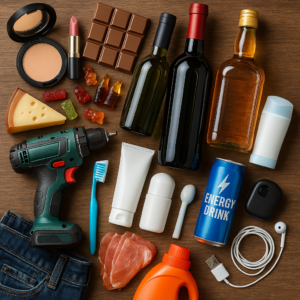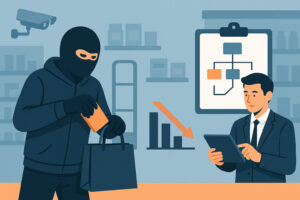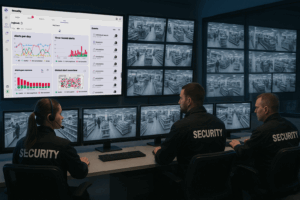Loss prevention in-store is a key issue for retailers, especially in sectors such as supermarkets, pharmacies and hardware stores . Knowing which products are most targeted by theft allows you to adjust security strategies and better protect your stock.
🌂 Alcohol and spirits
Easy to conceal, small and high in value, bottles of alcohol top the list of stolen products. Their appeal for resale makes them a recurring target. Thieves often operate in groups, targeting premium brands like whiskies, vodkas or champagnes. These items are resold through parallel channels, especially online or at markets. This kind of theft leads to significant financial loss for retailers, particularly during holiday periods.
🍼 Baby products
Infant formula, nappies and baby wipes are essential products, and their high demand makes them frequent targets for theft. Their high price and constant restocking make them a sought-after item for resale. Some thieves sell them at cut prices, taking advantage of economic pressures on families. The theft of these items is often linked to hardship situations.
💋 Cosmetics and perfumes
Beauty items, especially high-end perfumes and make-up, are often stolen because of their compact size and high market value. These products appeal to both casual thieves and organised groups, often to feed online resale platforms. Major brands are particular targets due to strong demand. Some thieves even use lined bags to bypass security gates.
💊 Over-the-counter medicines
In pharmacies, painkillers, dietary supplements and other OTC items are common targets. Their small size makes them easy to steal. Some medications can be diverted from their original purpose, making them even more appealing. What’s more, their sometimes high price motivates theft for under-the-counter resale or personal use. Pharmacies need to balance prevention and surveillance without restricting accessibility.
🌟 Batteries and small electronics
Batteries, memory cards and phone accessories are among the most stolen items, especially in hardware or convenience stores. Their small size and high unit value make them easy to steal and offload. They are often coveted due to strong demand. Thefts sometimes occur in series, targeting full aisles in less monitored areas.
👔 Razors and blades
Despite being basic items, disposable razors and refills are often stolen for their high price and compact size. Discreet packaging makes them easy to conceal. Many thieves target them for personal use but also for resale online or at markets. These items represent a high replacement cost for stores, which have to strengthen their security with anti-theft cases.
💰 Gift cards and prepaid vouchers
Stolen before being activated, these cards are sometimes stolen in bulk, often to be resold or used fraudulently. Their slim format makes them easy to steal at the register or from displays near exits.
🥛 Packaged cheese and meat
In the food sector, these high-value products are in high demand, especially due to their popularity. Food theft is often motivated by immediate need but can also be organised on a large scale.
🏋️ Clothing and accessories
Clothing items, especially small accessories like sunglasses or caps, are often targeted on the racks. Trendy brands are high-value targets for resale on second-hand platforms. Some thieves make store rounds to accumulate stock for resale.
🧬 Tools and DIY materials
In DIY stores, screwdrivers, drill bits and small equipment are frequently stolen as they’re easy to hide and resell. They’re in constant demand, especially among tradies or DIYers, making them a profitable target. Stores need to step up surveillance on technical aisles and restrict access to certain items.
🛡️ Getting ahead with behavioural detection
Rather than just monitoring the products, innovative retailers are turning to solutions based on suspicious gesture analysis . By using artificial intelligence to identify risky behaviours in real time , it’s possible to prevent theft without compromising the customer experience.
Technologies like those from Oxania offer precise, non-intrusive detection tailored to each store type, enabling in-store teams to respond quickly while creating a safer environment for everyone.
📆 In conclusion
Understanding which products are most at risk of theft is an essential first step. But by combining this knowledge with smart AI tools it becomes possible to reduce losses, improve profitability and protect your brand reputation . Behavioural technology is now a major asset for the retail of tomorrow.





